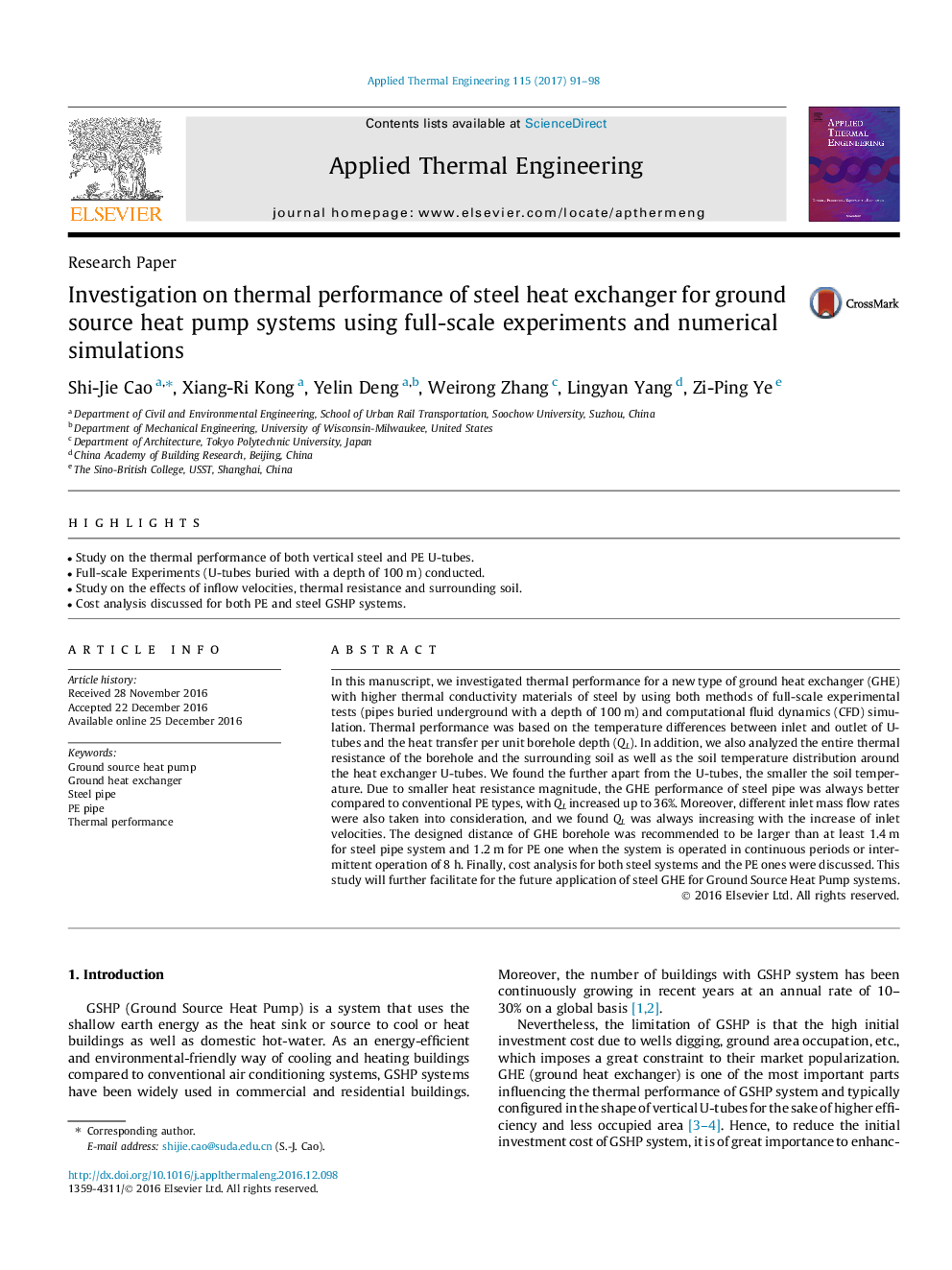| Article ID | Journal | Published Year | Pages | File Type |
|---|---|---|---|---|
| 4991584 | Applied Thermal Engineering | 2017 | 8 Pages |
Abstract
In this manuscript, we investigated thermal performance for a new type of ground heat exchanger (GHE) with higher thermal conductivity materials of steel by using both methods of full-scale experimental tests (pipes buried underground with a depth of 100Â m) and computational fluid dynamics (CFD) simulation. Thermal performance was based on the temperature differences between inlet and outlet of U-tubes and the heat transfer per unit borehole depth (QL). In addition, we also analyzed the entire thermal resistance of the borehole and the surrounding soil as well as the soil temperature distribution around the heat exchanger U-tubes. We found the further apart from the U-tubes, the smaller the soil temperature. Due to smaller heat resistance magnitude, the GHE performance of steel pipe was always better compared to conventional PE types, with QL increased up to 36%. Moreover, different inlet mass flow rates were also taken into consideration, and we found QL was always increasing with the increase of inlet velocities. The designed distance of GHE borehole was recommended to be larger than at least 1.4Â m for steel pipe system and 1.2Â m for PE one when the system is operated in continuous periods or intermittent operation of 8Â h. Finally, cost analysis for both steel systems and the PE ones were discussed. This study will further facilitate for the future application of steel GHE for Ground Source Heat Pump systems.
Related Topics
Physical Sciences and Engineering
Chemical Engineering
Fluid Flow and Transfer Processes
Authors
Shi-Jie Cao, Xiang-Ri Kong, Yelin Deng, Weirong Zhang, Lingyan Yang, Zi-Ping Ye,
